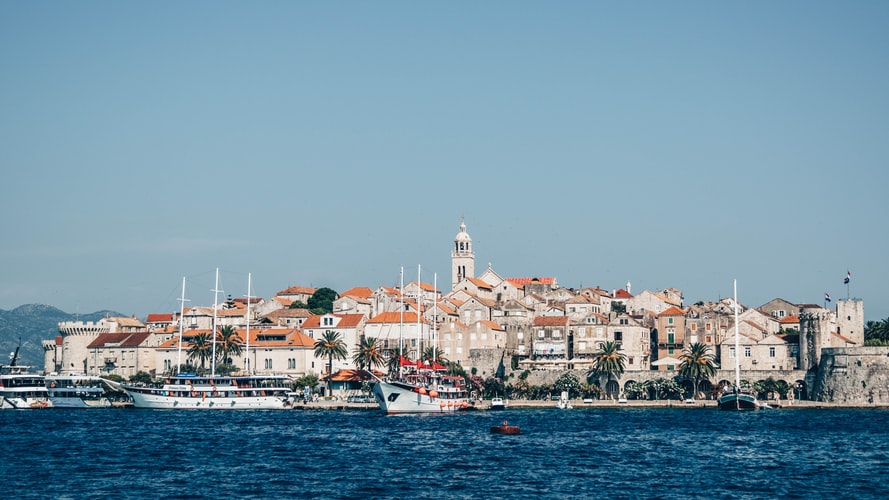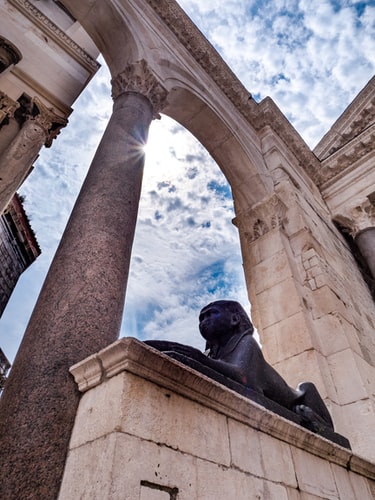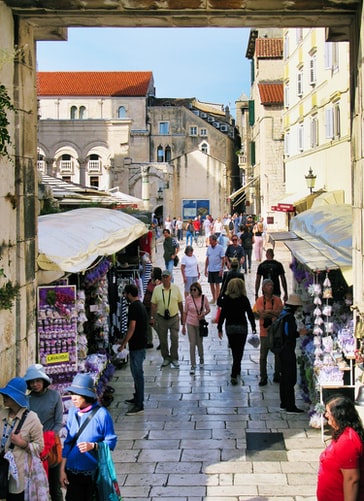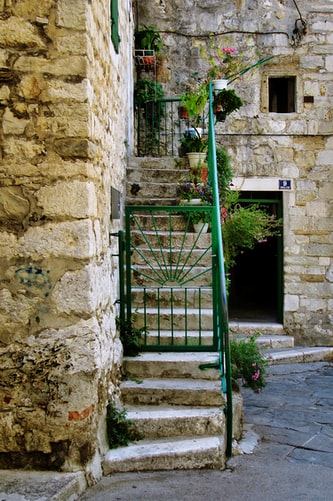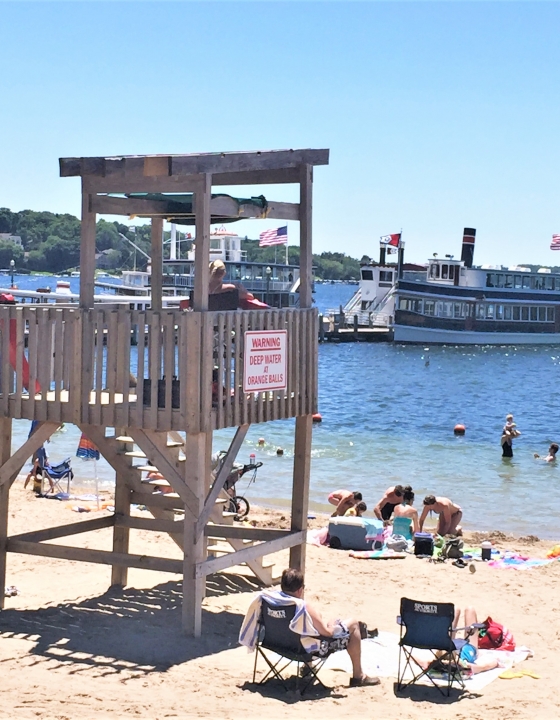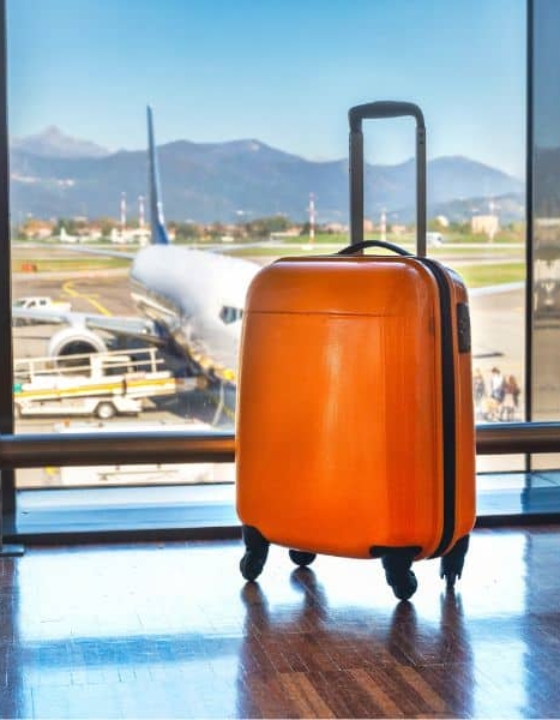Hi everyone and Welcome back to the Travel Section of The Code of Style Magazine, and I’m delighted to share with you this post about “The Old Town of Split”, by our Contributing Columnist, Renata Huster.
I’m Julia (Instagram: @julia.rees_), Senior Travel and Style Editor for The Code of Style. I hope you enjoy this article on the Old Town of Split, Dalmatia and I’ll be back to share some more travel inspiration with you again soon!
So, read on to find out more about Split from Renata.
I was a young lass of 17 when I first stood on Croatian soil and all my ancestors within my Slavic soul sighed in blessed relief! The insane beauty of the Dalmatian coast completely charmed me. I remember as if yesterday, how I spent a good part of my teenage years chasing sun kissed summers which seemed to fly by way too soon!
The Dalmatian region of Croatia is the land of my fathers. As a child, I identified strongly with Dalmatian culture and fondly remember sitting on my dad’s lap listening intently as he described his hometown, Split, and the poems and songs of his youth. I knew well the hearty rich sound of Dalmatian patois. I had broken the bread with our Croatian friends countless times as Croats do, and used it to mop up the tasty flavorsome homemade Šalša (a light stew typical to Dalmatia made up of tomatoes, onions and spices) that remained on my plate.
So what is so devastatingly irresistible about this particular part of Croatia? Why are so many foreigners moving in droves to the Dalmatian coast, particularly to the city of Split? Putting themselves through excessively complicated and mind numbing bureaucracy in order to live among the Slavs? Recently, after spending 4 months there, it’s quite simple to answer; Dalmatia simply steals your heart…
The city of Split snuggles a part of the south-eastern Dalmatian coast. This vibrant and bustling town is protected by majestically rugged alps that stretch along the coastline like a jagged fortress wall. Its perfectly clean cerulean blue sea and matching sky and islands that lounge lazily somewhere off in the distance, under a golden sun, paint a picture of paradise. Winters are warm but you need to be prepared for a sudden rush of that infamous ‘Bura’ (dry east wind) that can chill you right to the bone! Its sudden blast on a warm winter’s day is a not so gentle reminder that you are indeed privileged to enjoy an uncommonly warm winter.
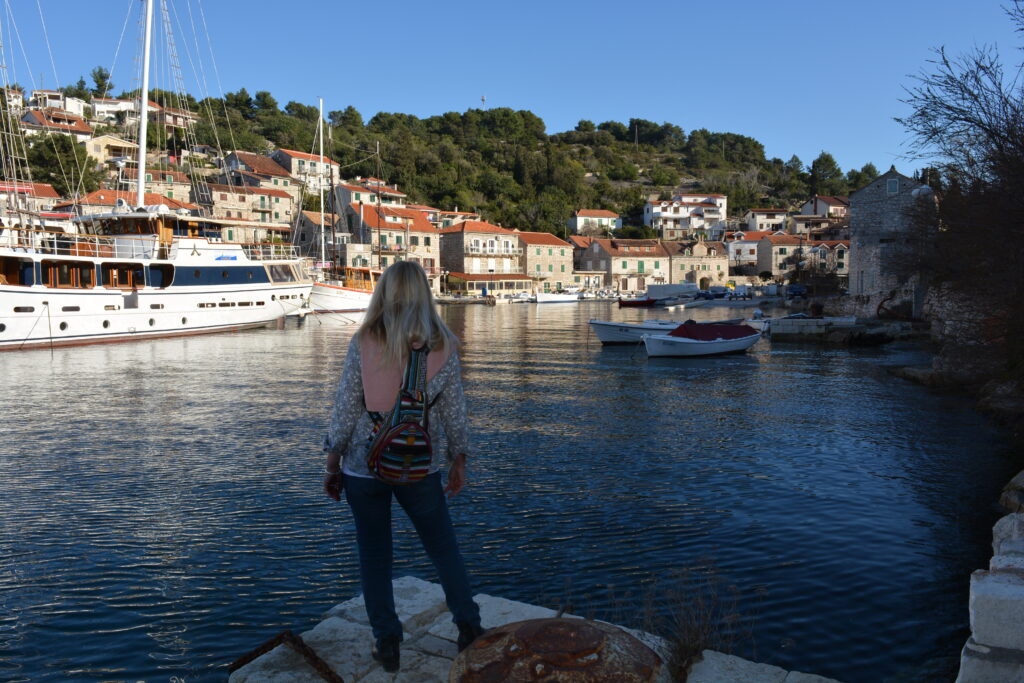
Split has a beautiful harbour affectionately known as the Riva, a seafront promenade lined with palm trees, restaurants and cafes. On Saturday mornings, achingly handsome Croatian men and ridiculously pretty Croatian women love to stroll up and down the Riva clad in designer clothes, as if on one long catwalk, complete with a tribe of sophisticated pedigree dogs; French and English bulldogs, white wiry Westies and Poodles with their perfectly coiffed fur, strut proudly alongside their owners, while the rest of us sip coffee in a cafe and watch the parade!
The old town of Split was a ‘retirement’ palace built at the turn of the 4th century for the Roman Emperor Diocletian. Many of the cobbled streets and lanes within the old city were at one time the palace corridors. My family still live today in an apartment within the palace.
The old town’s centre is dominated by famous palace ruins. The stone floor underneath your feet is an ancient Roman road that history has marched up and down. The Peristyle or the imperial square is at the center of the city. It is here that Diocletian addressed the hoards. Towering above the square is a 57- meter- tall bell tower of St Dominus. It’s worth the climb to the top as it boasts one of the best panoramic views of the city. The imperial square leads down to the underground cellars, still so beautifully intact, where you can buy stunning handmade jewelry or a colorful painting that captures perfectly one of Splits many moods, by a local artisan. Or enjoy the fashionably Bohemian experience of sitting on the steps circling the Peristyle, sipping wine and sampling freshly cooked seafood while a ‘guitar gently weeps,’all courtesy of Restaurant Lvxor.
There is no short supply of charmingly quaint places to eat in the old town. You can wander through and safely pick anyone you like, as all of them offer a great variety of local fare, the produce they use is excellent, the stuff of a medieval feast. but while in Rome… well, do as the Dalmatians do! and frequent one of the old taverns known as a Konoba.
Konoba Kotor springs to mind with its old local recipes of Monk or cuttlefish served with grilled vegetables or homemade pasta from Great Gran’s table, pure authentic Dalmatian food at its tastiest. I strongly suggest you try a dish called Pašticada.
It’s a beef, tuna or swordfish stew, slowly cooked in seasoned vegetables with a subtle taste of prunes and served on a generous mound of homemade gnocchi, washed down with a good bottle of red from the nearby island of Hvar.
There is a big expat community flourishing in Split, the relaxed lifestyle and easy going mentality of the Croatian people is a welcome change to the hectic pace found in other westernized countries. Split is a labyrinth, a maze of historic paths and passages, twists and turns, leading to lay back cozy nooks for nibbles and a glass of red! People actually live in apartments that share the palace walls. Antique lace hangs from tiny windows, freshly washed sheets billow in the breeze, flapping softly against a gargantuan palace wall and ancient history smiles.
Apart from the culinary delights of Dalmatia, the stone houses, the many museums and the palaces within the palace, Split has a special place to escape to, from the town’s boisterous mood, so you can catch your breath and unwind! Marjan Hill overlooks the city like a sleepy cat and offers a zoo, a large playground for the kids and pine forest walks. And if you can manage the very steep steps that lead right to the top of Marjan Hill, you won’t be disappointed, as before you lies a stellar view of the whole city, its islands and many surrounding villages that cluster around the edge of the city and stretch along the coast.
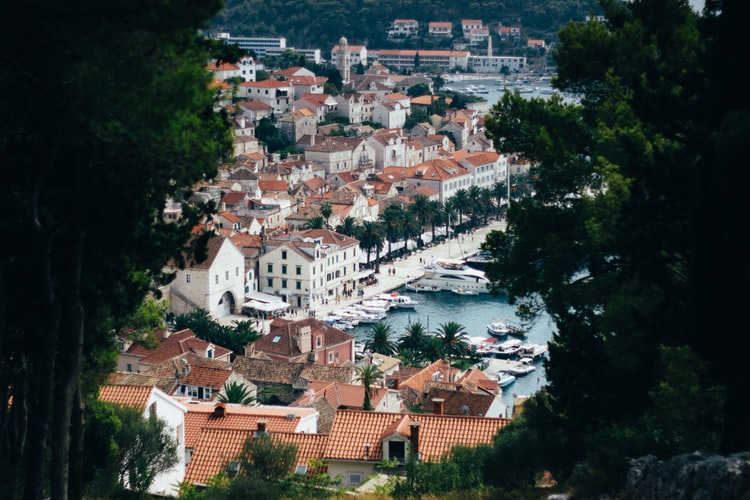
There is almost too much to enjoy in Split! There are stunning beaches with beach cafes to quench your thirst on boiling hot summer days. There is a huge food market known as Pazar and it is there you will find produce gorgeous in appearance, in color and tasty in flavor. The smell of lavender, oregano and thyme follow you from stall to stall. People go there just to feel the local spirit. Old widows dressed in black cry out incessantly to the sea of shoppers hoping someone will buy their cheese or Dalmatian smoked ham.
Split has an open air pine scented cinema that overlooks the sea so if the movie gets boring you can sit back with a glass of wine and look out at the many moonlit islands.
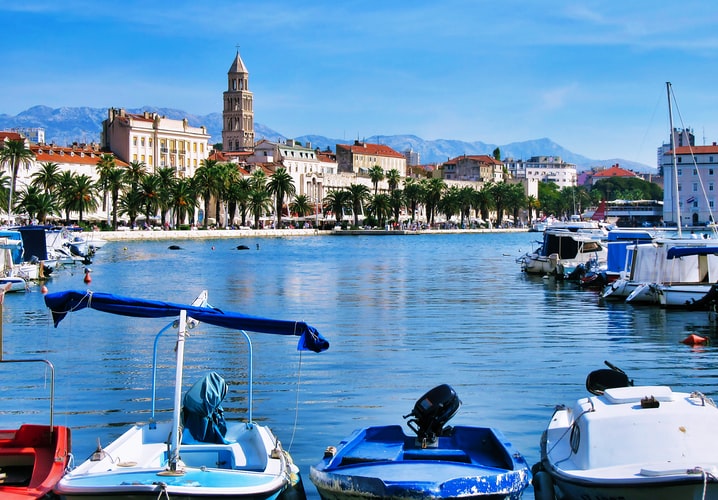
If Split romances you, the mystery of island life seduces. Soft evening lights twinkle from afar tempting you to hop over on one of the many ferries or catamarans that are constantly coming and going, their departing wail as regular as the bell tower dongs. And so I jumped aboard one and set off to the island of Korčula.
Korčula is indeed a jewel afloat upon a turquoise sea. It is there you will find the renowned Korčula town. An ancient medieval fortress. There are numerous little dreamy lanes to wander through and even the childhood house of Marco Polo can be found in one of them.
Astonishingly enough I fell head over heels in love with a very simple town on the opposite end of the island called Vela Luka. It simply melted my heart! Immediate bliss! Vela Luka has the longest bay in Dalmatia and is heaven to stroll along at any time of day! There are so many hidden nooks to go swimming in and not be bothered by another soul for hours! On an evening it is softly lit up, mostly by moonlight. The gentle sound of water lapping against the side of the little wooden fishing boats in the bay is pure poetry. I easily fell in step with the town’s restful relaxing rhythm! Vela Luka captures the old Dalmatian spirit. I was in my kind of paradise, without all the tourists, the tourist shops and the modern glitz and glam! Vela Luka has no night club and in my opinion as a lover of island tranquility that’s a good thing!.
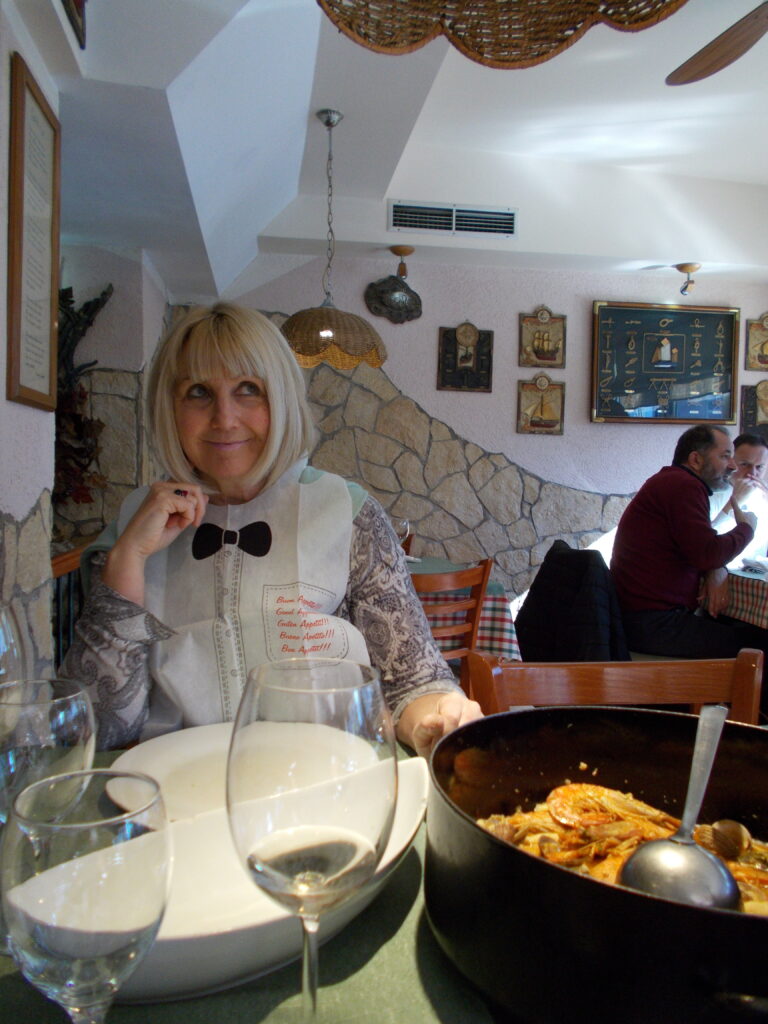
The best food I’ve eaten anywhere (and I do mean anywhere!) is found in the center of the bay, at a tavern called Skalinada. Tavern Skalinada is hidden under a lush verdant vine, opening up just enough to gaze at the bay. It serves fresh -from- sea- to- table luscious seafood served with creamy shards of boiled potatoes, green- flecked zucchini and grilled peppers.
Hotel Korkyra located 30 metres from the sea and just a short walk from the ferry terminal is excellent value! I was given their best room with a waterfront view of the bay, including a deliciously hearty breakfast for an unfathomably low price!
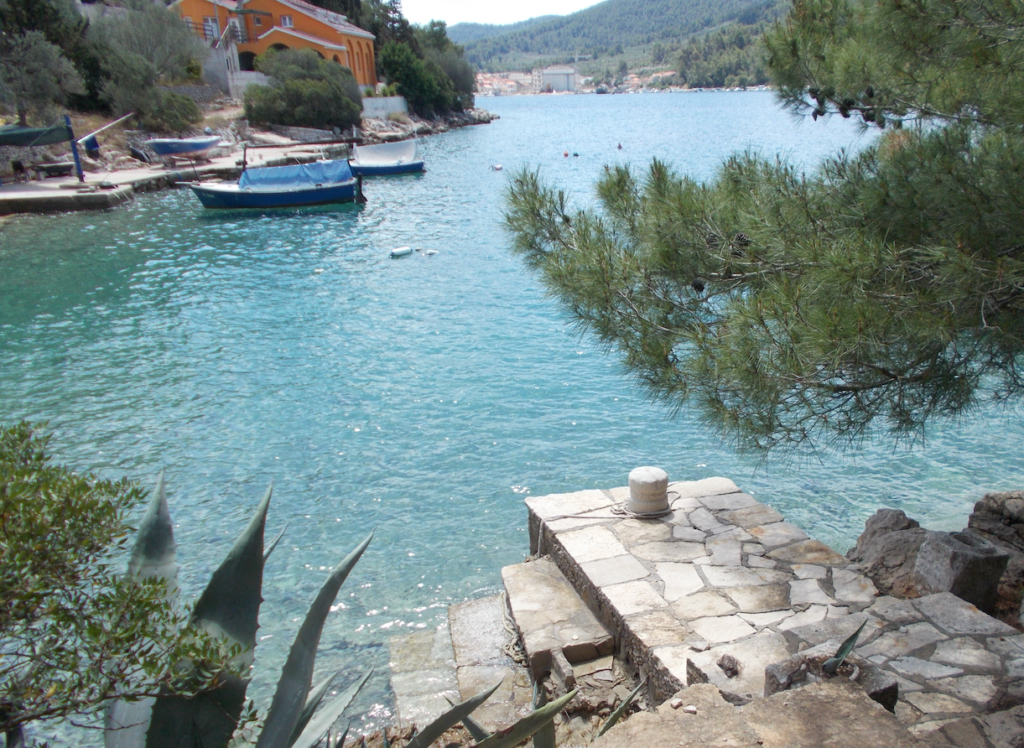
I sadly said goodbye to Split as I flew over the Dinaric alps, part of me always remains… I had shared all the uncertainty of the Covid-19 crisis with my fellow Slavs and true to their nature they were generous in spirit and brave. My Slavic soul, like a compass, will always point home to Dalmatia, after all, Dalmatia has stolen my heart.
I hope you enjoyed this article about the beautiful old town of Split and I can’t wait to share some more travel inspiration with you again soon!
Julia x ( Senior Travel Editor)
Renata Huster is a freelance writer and author. As a lover of adventure, she has traveled extensively throughout the world, and she is an avid reader and lover of art.
Save


